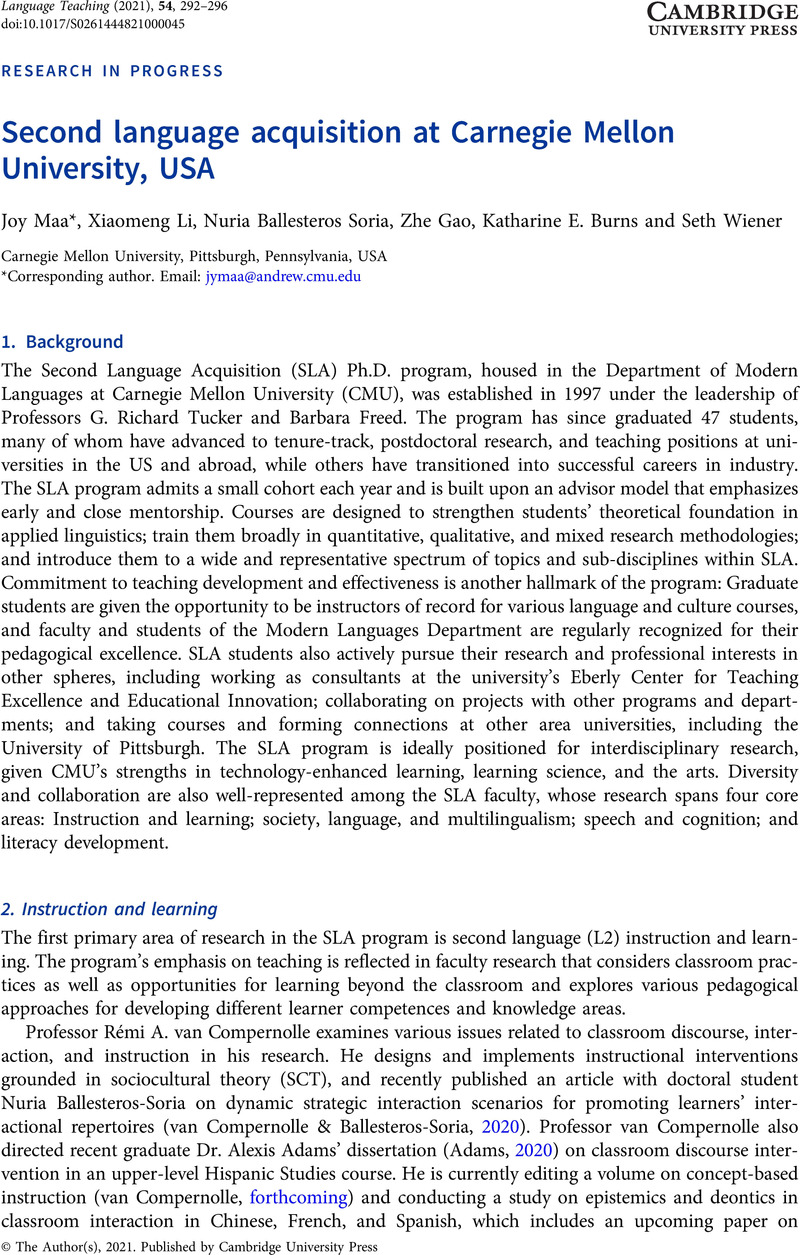Wiener, S.,
Murphy, T. K.,
Goel, A.,
Christel, M. G., &
Holt, L. L. (
2019). Incidental learning of non-speech auditory analogs scaffolds second language learners’ perception and production of Mandarin lexical tones. In Proceedings of 19th International Congress of Phonetic Sciences, Melbourne, Australia
2019 (pp.
1699–
1703).
Google Scholar 